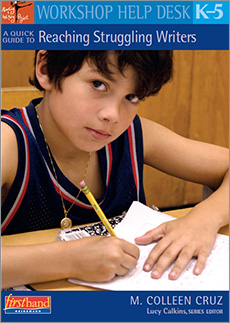Are you getting ready to write your own All About Book to teach your young writers a new form of writing? Are you using the Units of Study Book written by Lucy Calkins and Laurie Pessah, Non-Fiction Writing: Procedures and Reports? If so, you'll want to create some demo writing to use with your students.
This year my All About Book has been inspired by a long time love affair as well as recent events. Are you wondering what topic I chose? It is.... All About the Green Bay Packers! I thought I better get at least a few pages of my demo text up before the big game this Sunday. Below you will see my cover and planning page as well as one of the sections in my book (ironically, it is the section kids are most interested in when I visit classrooms).
First, the planning page.
My colleague Marjorie (a follower of our blog) taught me this strategy for young writers and I am happy to share it with you. Yes, you can plan by organizing a table of contents. You can also plan by using a web as Laurie suggests in the book. Many kids know and like these ways of organizing their information. But last spring I tried this "draw what you know about your topic" strategy. Then point to each picture and teach something (orally rehearse that out loud). Then, grab a piece or two of paper and make that section/chapter.
For example, in my book I can touch the player in the bicycle and rehearse or teach about the preseason ritual of kids lending their bicycles to hefty players as they commute from the stadium to the practice facility. I might say out loud, "It is a long tradition for players and kids from Green Bay to interact during training camp. Each July and August weekday, kids wake up early, ride their bikes to the stadium, and wait near the door where players exit to walk to the training camp facility. Players choose a kid with a wave or a handshake and then, the burly player climbs onto a small-ish bike and hands his helmet to the kid. The player rides the bike, often with a few wobbles while the kid runs along side carrying the helmet. It is a beautiful sight to see NFL players having such close interactions with their youngest fans. Some players choose a regular, the same biker each day, while other players opt to choose a different kid each day." After I rehearse this out loud, I would get the pages from the writing center, thinking carefully about the paper choice I would want to use to convey this information. Then, I would show I would plan to put all of these words on the paper.
The second graders in Rachel and Dan's CTT class were on fire as were the kids in Liz's kindergarten class when we gave them the option of drawing everything they knew, then touching the pictures to rehearse/teach, then write. We gave the second grades the choice of planning tools since they had used tables of contents and webs in the past. The kids chose the planning strategies that worked best for them as individual writers. The kindergarten writers seemed to be able to organize their books with ease by looking back on the "cover" that had all of their pictures and then turning to a new page to write/teach.
*** Important note: The kids planned and began drafting sections of their books all in one day. You don't want to limit kids and make them wait for the next step. Get them started making the sections fast!
You can see one of my drafted sections of my book below. It is the Parking section of my All About The Green Bay Packers book. I mentioned earlier that this is the section kids seem most interested in when I show my demo writing. I think they may have spent some time looking for parking in their young lives : )
Choose your own passionate topic and get started. Happy Writing!




